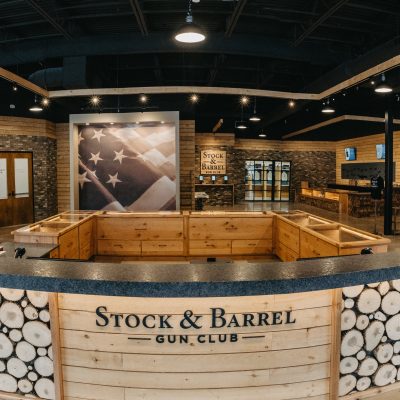Much like traveling for any extended period, preparation is key when traveling with firearms. If you understand the rules and know how they apply where you are going, you’ll have a hassle-free experience. On the other hand, if you don’t understand what you’re walking into your trip can be severely impacted by bringing a firearm in certain circumstances. We’re going to break those down by modes of travel, driving, and flying specifically.
YOU NEED A CONCEAL CARRY PERMIT (MN PERMIT TO CARRY)
Before we talk about either though, a Concealed Carry Weapons permit (in MN this is called a Permit to Carry)is not only recommended but also likely required. Where this gets a bit complicated is that each state has different laws regarding not only their own in-state CCW’s but commonly they also have different rules regarding multi-state permits. A phrase you should be comfortable understanding when it comes to firearms law is the following: “Ignorance of the law is no excuse.” That applies specifically to traveling with firearms. If you visit a place where your CCW isn’t valid, and you have your firearm, you are subject to the laws of that state. Claiming that you just didn’t know is no excuse. On the plus side, there are a number of websites that not only show where your CCW is valid (also known as reciprocity) but they also lay out in detail specific regulations. As an example, your Minnesota Permit to Carry (P2C) is accepted in Iowa with restrictions, but Iowa’s permit is not acceptable in Minnesota. Websites for USCCA, USACarry, and GunstoCarry have interactive maps of CCW laws and reciprocity. It is highly recommended reading.
TRAVELING DOWN THE INTERSTATE
Now let’s talk about interstate travel on the roads. This one isn’t nearly as cut and dry as people think it should be and there are some gray areas you should be aware of. As established previously, different states have different permit regulations, but those apply in driving a bit differently. If you are driving on an Interstate Highway such as I-35 you are subject to Federal law. In that case, firearms state laws do not apply and things are much easier. The problem arises when you need fuel or a bathroom break. That gas station or restaurant just off the freeway isn’t on Federal land, it’s considered state. So, the moment you pull off the Interstate you are subject to whatever state laws you are in at that moment. A piece of advice here: should you find yourself driving through a state where having a firearm with you would be a legal issue plan to, if possible, not pull over in that state and drive straight through.
The next part of this is if you are pulled over, how do you interact with law enforcement? There are two schools of thought here. Both have upsides and downsides but knowing both is important. First and foremost, once you see those flashing red and blue lights realize that your level of courteousness and cooperation will, to a point, make this interaction easier or harder. As an example, in Minnesota, if you are pulled over you are NOT required to inform the officer immediately that you have a concealed firearm unless asked directly. Now some also believe that as you hand over your license and registration you should also pass on your permit to carry. Some also believe that unless the officer asks, saying nothing is the better route. But some states do require that you inform an officer if pulled over that you are concealing a firearm. Again, ignorance of the law is no excuse.
RULES STILL APPLY WHEN GOING BY PLANE
Airline travel with firearms is also legal, however, much like each state has different regulations each airline does as well. Fair warning, some of those regulations are quite odd and show a fundamental misunderstanding of firearms. Seeing as how Minneapolis-Saint Paul International is the hub for Delta we’ll use them as our example. You must declare to the person checking in your bags that you are checking a firearm at the ticket counter. Firearms must be unloaded and packed in a locked, hard container using TSA-compliant locks. That hard container can also be packed in a larger bag (highly recommended to avoid theft) but with Delta the larger bag also needs to be tagged as containing a firearm. Ammunition can be packed with the firearm but cannot be loose, it needs to be either in the ammo manufacturer’s original box or another solid case (most airlines do not let you travel with loaded mags). You cannot pack more than five handguns in one case with Delta and you are limited to bringing eleven pounds of ammunition. For context, that’s just slightly more than four hundred rounds of 9mm .
Along with that, any carry-on bags should not be ones you use as range bags. The likelihood of a loose round you missed or GSR (gunshot residue) popping up as you go through security is too high.
Once you have declared and checked the firearm it is now subject to TSA’s control, and they can inspect it separately – and usually do. Plan timewise for that extra TSA inspection. This is also the reason for TSA-compliant locks. You will get a wide variety of reactions from both the ticket counter and TSA inspectors. The key is to stay calm and let them work.
When you arrive at your destination, your bag should not be on the carousel, and you will need to go to the lost/large luggage counter to claim it. If you have connecting flights traveling through a state that does not allow your firearm and you see your bag on the carousel, don’t touch it! Have an airline employee transfer it to the next flight, otherwise, you might’ve just committed a felony. Lastly, the firearm stays in the case until you are off airport grounds.
Traveling with firearms is easy once you know the rules and can work within them, the key as with most things is planning to have an enjoyable experience.
Stock & Barrel Classes to consider:
- MN Multi-State Permit to Carry in Chanhassen and Eagan
- Travel Security & Safety in Chanhassen and Eagan
- Women’s Only Permit to Carry in Chanhassen and Eagan





